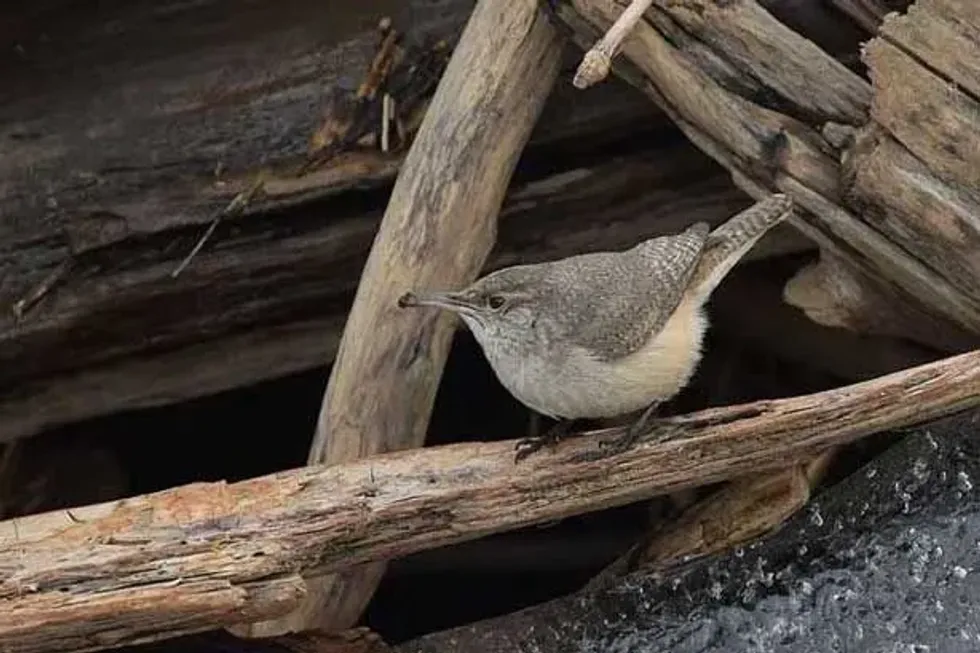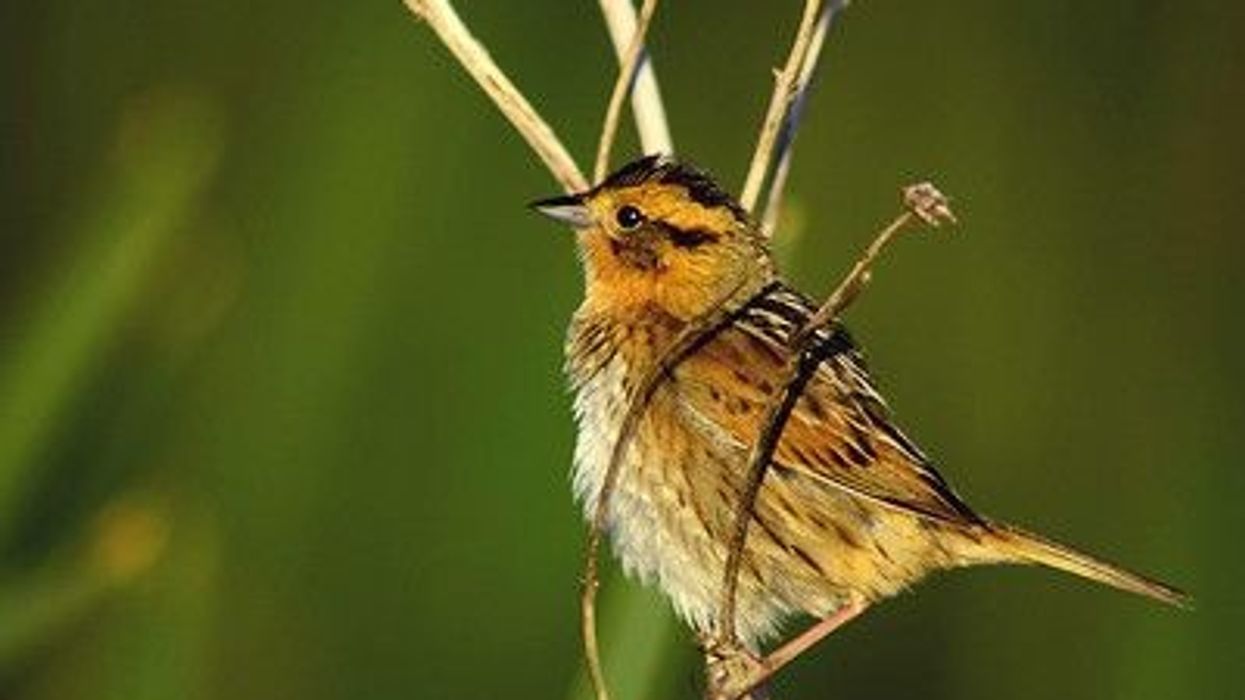The Stephens Island wren (Traversia lyalli), also known by the name of Lyall's wren, was a small passerine bird belonging to the family of New Zealand wrens. The last living specimen of the bird was known to be found in Stephens Island in the Cook Strait.
However, the Stephens Island wren was once known to exist everywhere in New Zealand.
The birds have seen an extinction event because of the lighthouse keeper's cat named Tibbles. When the lighthouse was made in Stephens Island, Tibbles the cat along with her master, David Lyall, the assistant lighthouse keeper, and 16 other people arrived at the island.
David Lyall was a naturalist and was keen to explore the island which at the time was unseen.
However, bringing along the lighthouse keeper's cat was a huge mistake as Tibbles was also pregnant at the time. All the lighthouse keepers were at fault and did very little in protecting the new species that they discovered.
Although everyone believes that Tibbles, the lighthouse keeper's cat killed the new species of bird found on the island, the actual reason for extinction might be the infestation of the feral cats on Stephens Island.
The discovery of the nocturnal and flightless species of bird called the Lyall's wren goes to Lyall, one of the lighthouse keepers of the islands. His cat brought him specimens and he could recognize most of the species, except one.
On the verge of a new discovery, he sent few specimens to Walter Rothschild, Walter Buller, and H. H. Travers.
The natural history of the earth has taught us many a time that cats have killed many species of birds and other animals throughout. The cats have pushed many species towards extinction, and the most dangerous thing about these animals is that they kill even when they are not hungry.
For more relatable content, check out these cactus wren facts and winter wren facts.
Stephens Island Wren Interesting Facts
What type of animal is a Stephens Island wren?
Stephens Island wren was a small flightless passerine bird of the family Acanthisittidae. The bird was a part of the group of New Zealand wrens and was found in Stephens Island. However, the last specimen was soon killed by Tibbles, a cat brought by David Lyall. New Zealand wrens are not typical wrens, but only lookalikes.
What class of animal does a Stephens Island wren belong to?
Stephens Island wren (Traversia lyalli) fell under the class of Aves in the kingdom of Animalia.
How many Stephens Island wrens are there in the world?
The new Zealand flightless bird species are now extinct. The applause for the discovery of the last specimen of the bird goes to David Lyall, a lighthouse keeper whose cat is considered responsible for the extinction of the Lyall's wren.
Where does a Stephens Island wren live?
Stephens Island wren (Traversia lyalli) was found all throughout New Zealand. However, when scientists struck a discovery in 1894, the last population of the bird was only seen on Stephens Island in Cook Strait.
What is a Stephens Island wren's habitat?
Wren birds are known to live in tree holes and nest boxes, gardens, and upland areas. However, the Stephens Island wren prehistoric wildlife was pretty calm and grounded as the flightless bird species lived peacefully on the island's habitat. The bird was found in woodlands, farmlands, heathlands, moorlands, and islands all over the continent.
Although Lyall with his pregnant cat was on the island for a short time, they along with other feral cats became a death sentence for these birds and many other species in the region.
Who do Stephens Island wrens live with?
There is no information on the company this extinct New Zealand bird kept.
How long does a Stephens Island wren live?
The lifespan of the Stephens Island flightless wren bird is not known. Rock wrens live for up to five years.
How do they reproduce?
Information on the reproduction of these birds is not available.
What is their conservation status?
The Lyall's wren or Stephens Island wren is now Extinct.
The species is popular by the claim that Tibbles, the cat brought by the lighthouse keeper David Lyall, made the Stephens Island wren (Traversia lyalli) go through extinction. But it was later found that the species became extinct after getting killed by the feral cats on the island.
Cats are responsible for killing thousands of birds and mammals every year. These predators are the reason for the extinction of many species around the world.
The discovery by Lyall, the assistant lighthouse keeper, could have been one for the ages, but the emergence of the feral cats on the island right after made the birds die completely. As the birds were not known to exist anywhere else, Lyall's wren was declared Extinct.
Stephens Island wren Fun Facts
What do Stephens Island wrens look like?

*Please note that this is an image of a rock wren, not a Stephens Island wren. If you have an image of a Stephens Island wren, please let us know at hello@kidadl.com.
The body of the Stephens Island wren (Traversia lyalli) was colored olive-brown. In the olive-brown body, a yellow stripe was seen passing through the eye. The underside of the females was colored gray and in males, the color was brownish-yellow. Feathers had brown edges. The wings were rounded and were short in length, along with the tail.
As per most reports on the Stephens Island wren, Tibbles the lighthouse keeper's cat was the reason for the extinction of the bird.
How cute are they?
They were probably considered cute, like most passerine birds in the wild.
How do they communicate?
The mode of communication is not known. Going by other passerines, the birds communicate by voice and singing. Vocal cues are the main modes of communication for passerine birds.
How big is a Stephens Island wren?
The size of the Stephens Island wren (Traversia lyalli) is not known.
How fast can a Stephens Island wren fly?
Rounded wings on this wild bird suggest that it could not fly.
How much does a Stephens Island wren weigh?
The weight of these birds is not known.
The weight of a house wren has a range between 0.022 - 0.026 lb (9.97-11.7 g).
What are the male and female names of the species?
Males and females were not given different names.
What would you call a baby Stephens Island wren?
Baby Stephens Island wrens were called chicks or juveniles.
What do they eat?
The diet of these birds is not known. Their diet could match that of other passerines.
The disappearance from the mainland was probably due to the introduction of the Polynesian rat by the Māori. On Stephens Island, however, the cat called Tibbles is considered responsible.
Are they dangerous?
They were not considered dangerous and lived peacefully on the island until the introduction of cats that killed every last one of them.
Would they make a good pet?
This species is now extinct.
Did you know...
David Lyall, the lighthouse keeper, believed that the flightless bird was like mice, running around on the rocks so fast that he could not catch it or kill it.
As Lyall, one of the lighthouse keepers and the owner of the cat that killed the birds found an unknown species, he sent the specimens to renowned ornithologists Walter Rothschild, Walter Buller, and H. H. Travers.
Walter Rothschild bought few specimens from Lyall for extensive research and Walter Buller recognized the specimens as a distinct species and wrote a scientific description for the journal. It was Walter Rothschild that gave the scientific name Traversia lyalli to the birds after the lighthouse keeper Lyall who discovered the species and H.H.
Travers who helped procure the specimen.
The flightless bird from New Zealand is known by two names - Stephens Island wren or Lyall's wren.
The dodo (Raphus cucullatus) is considered the first bird species to go extinct.
Why did the Stephens Island wren go extinct?
Natural history and discovery of fossils of the bird in New Zealand found that the bird species actually roamed around the whole country and later settled in the island's habitat. But the hunting tactics of the lighthouse keeper's cat wiped out the whole population of the Lyall's wren in just a year.
For the death of the last Stephens Island wren, a cat named Tibbles who was the lighthouse keeper's cat was given the blame.
However, the extinction event went on for more than two years, and many feral cats of the island were found to be the reason for wiping the Lyall's wren out of existence.
Now some specimens of the bird from the islands can only be seen in museums. Fifteen of the specimens are found in museums all over the country.










